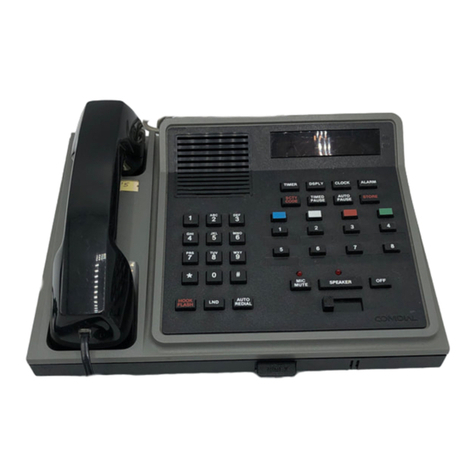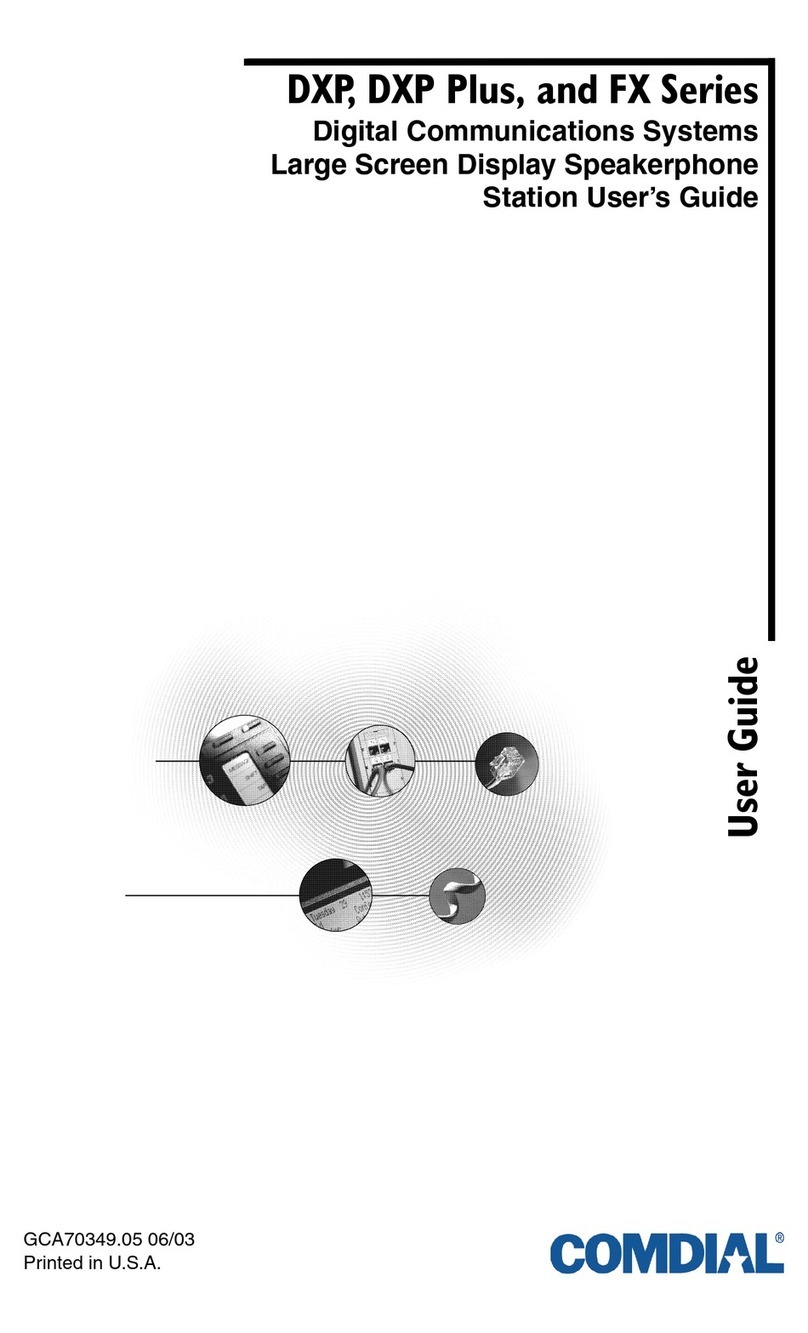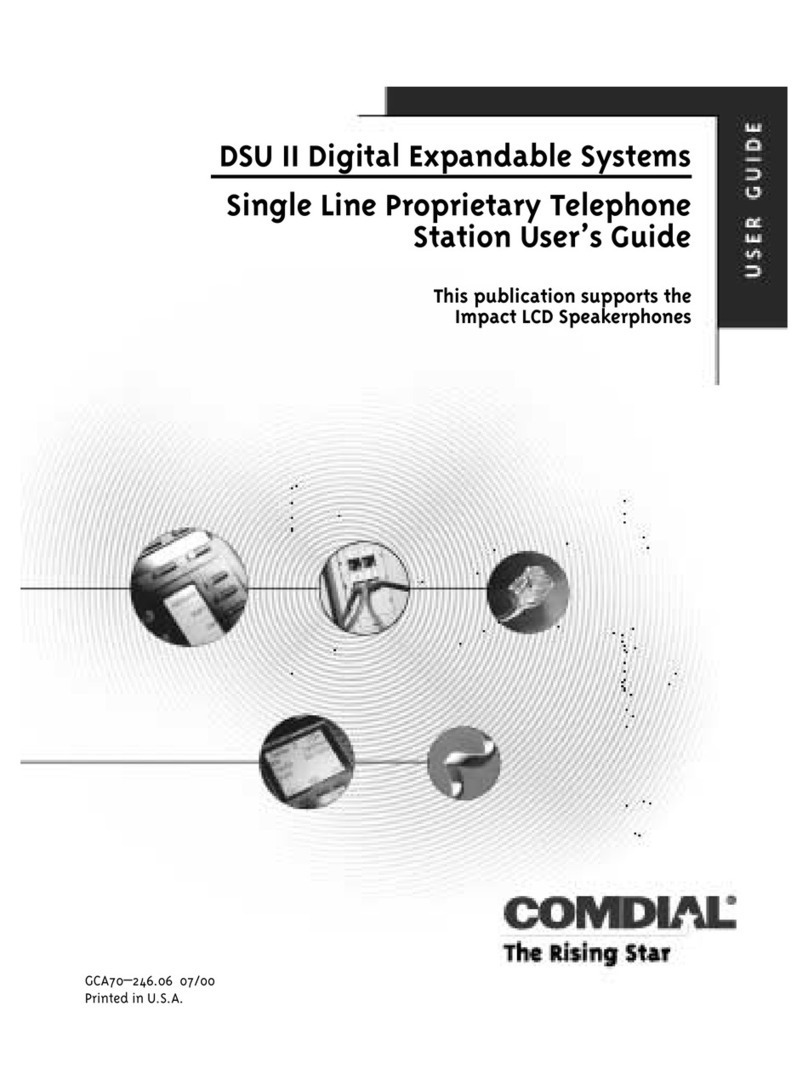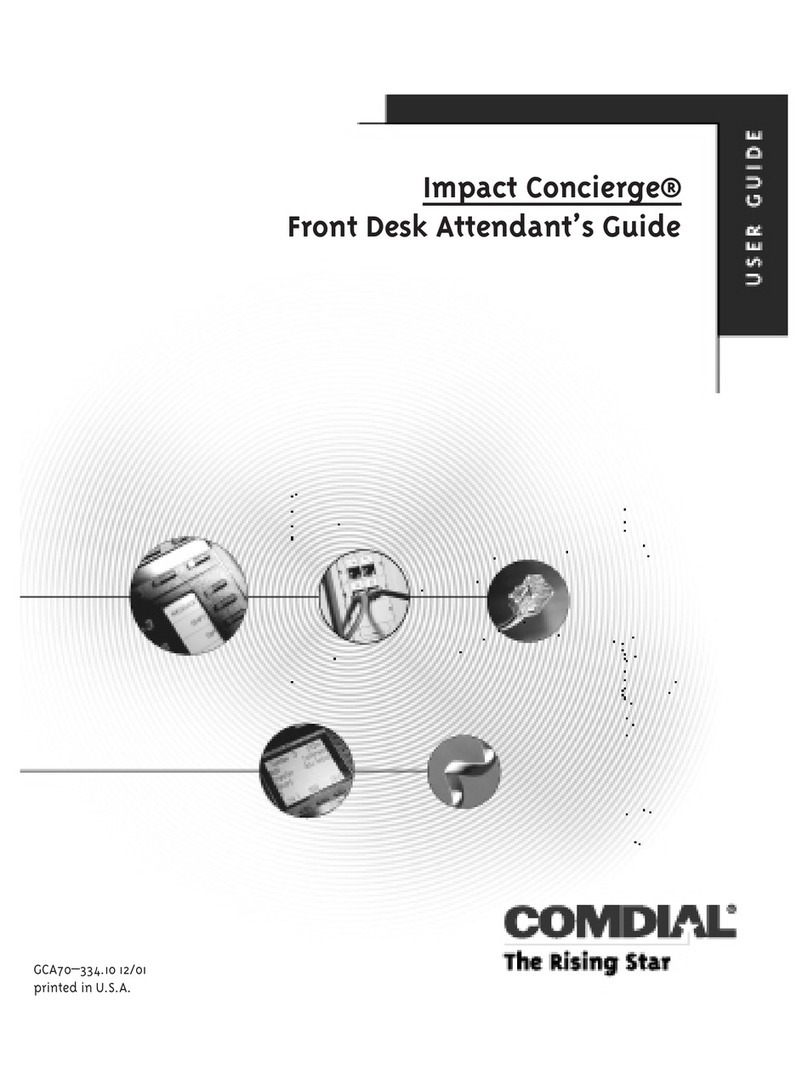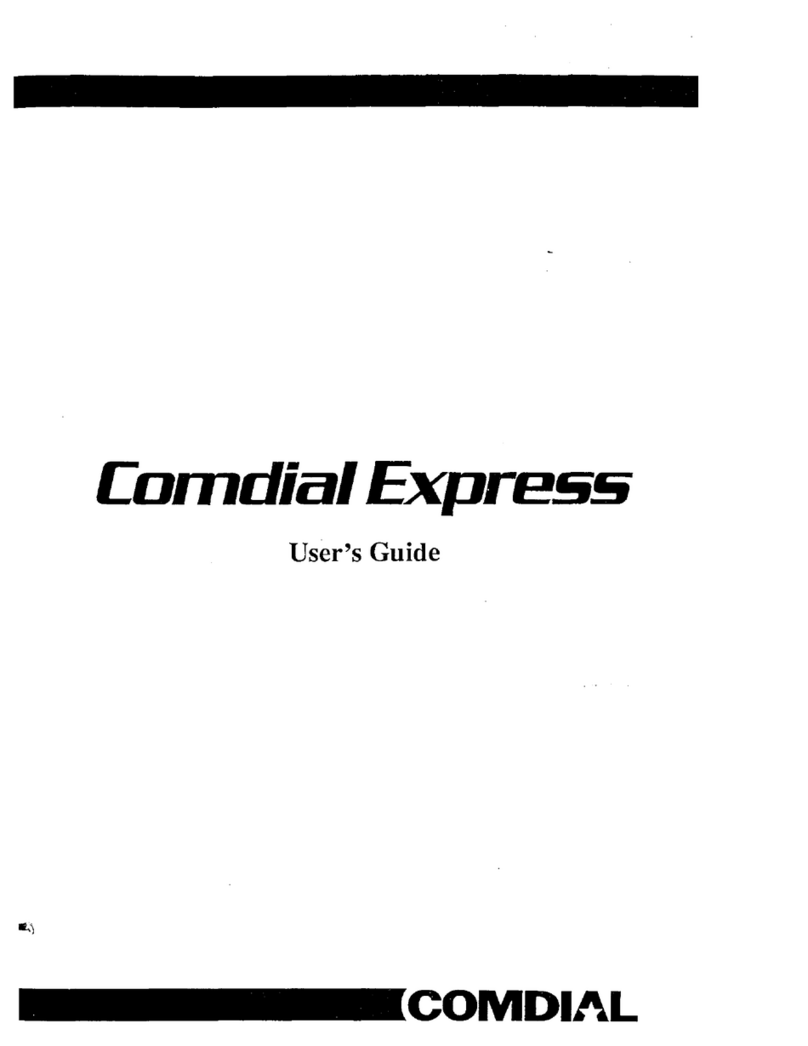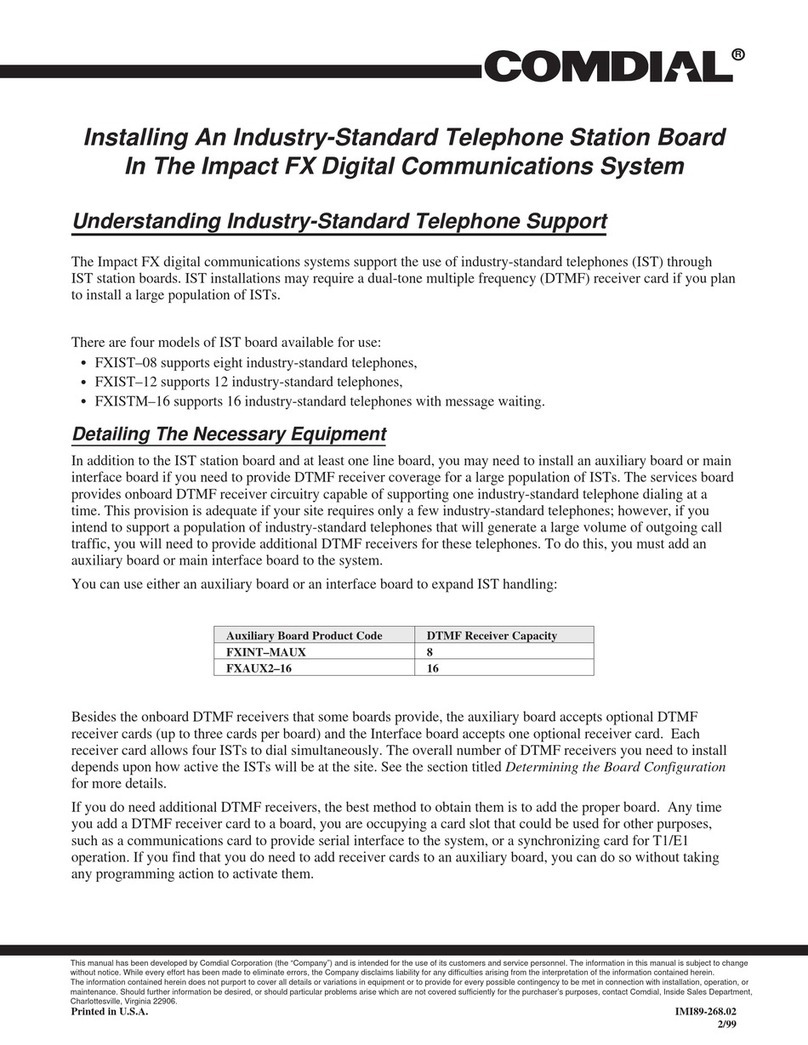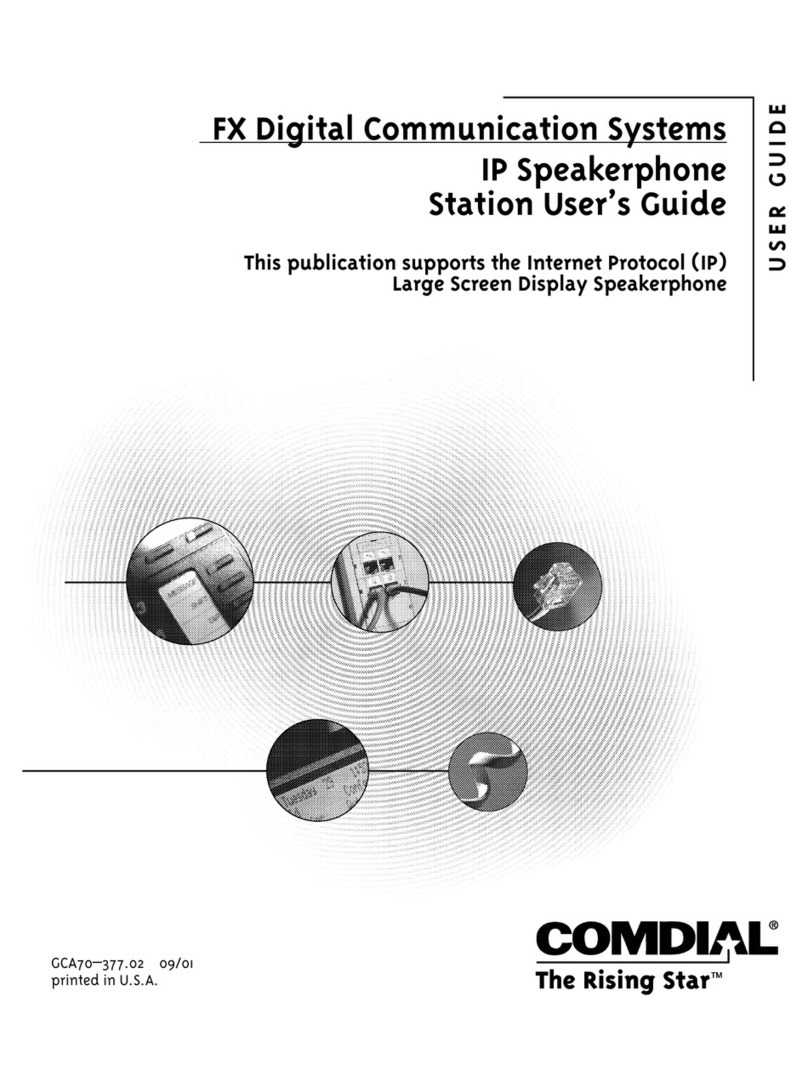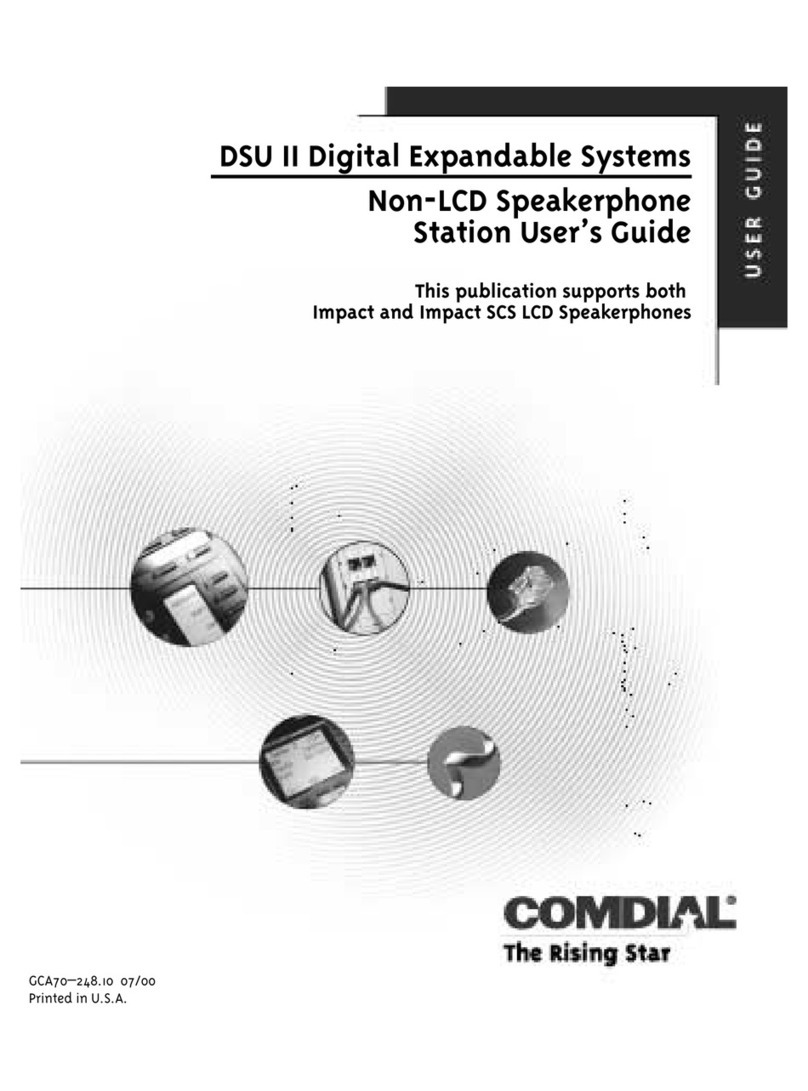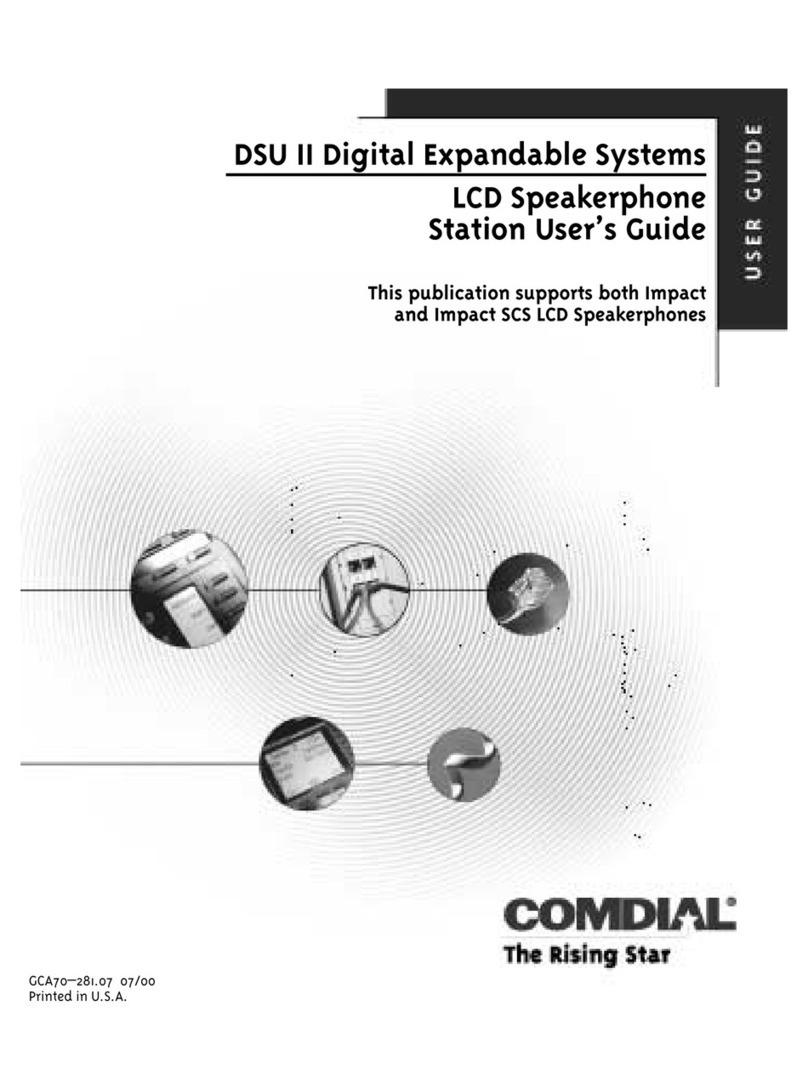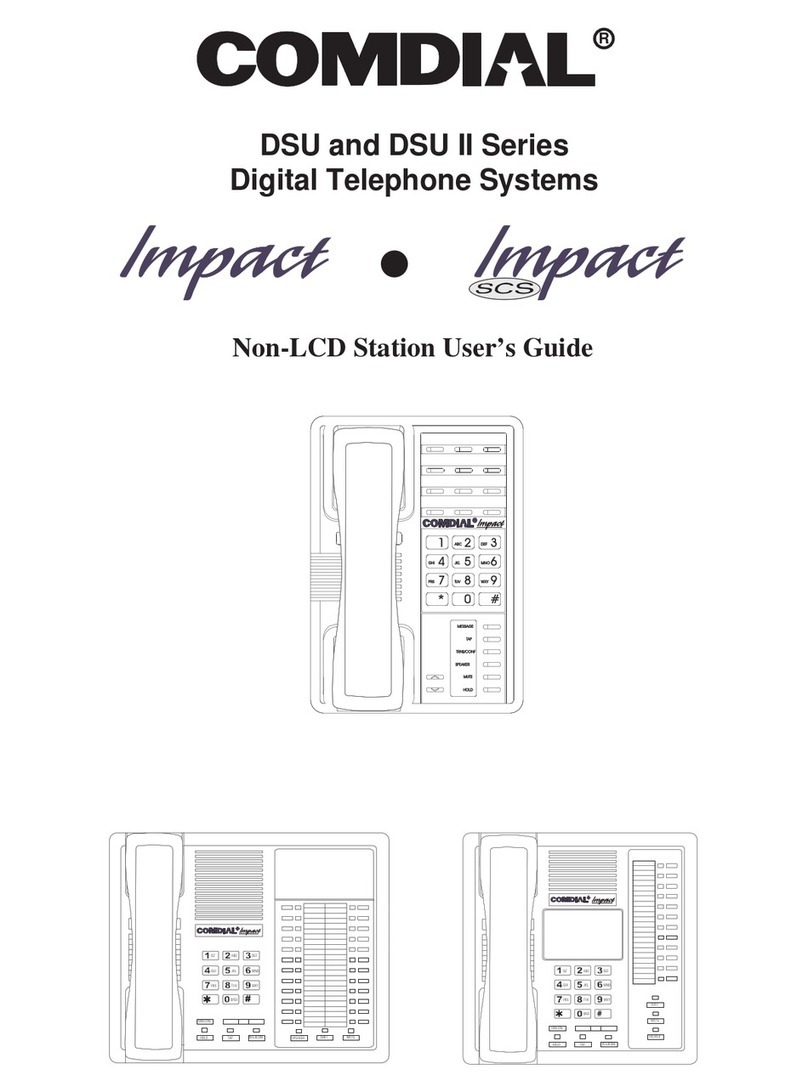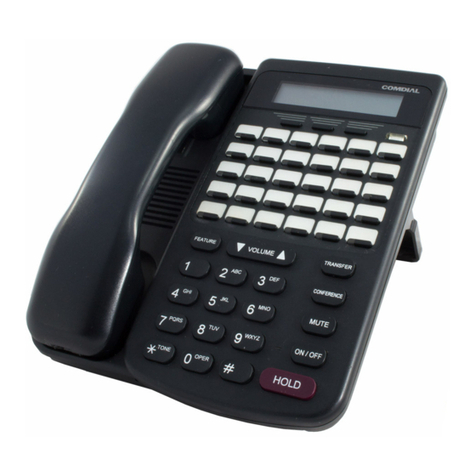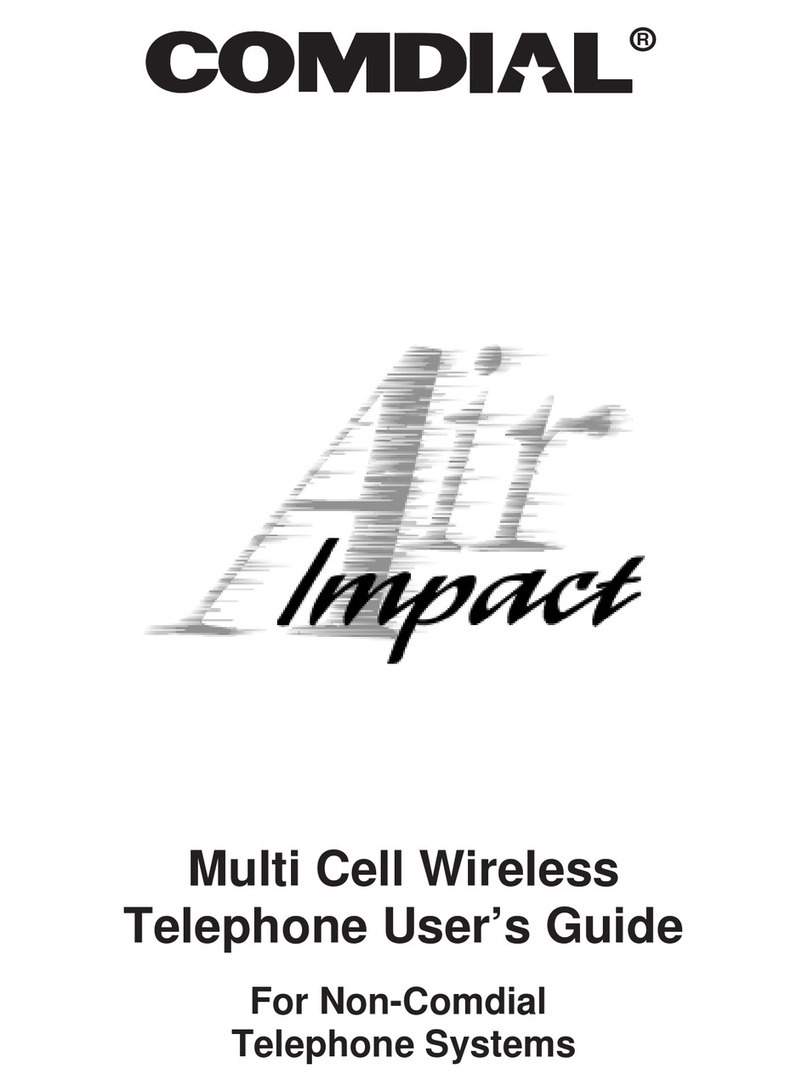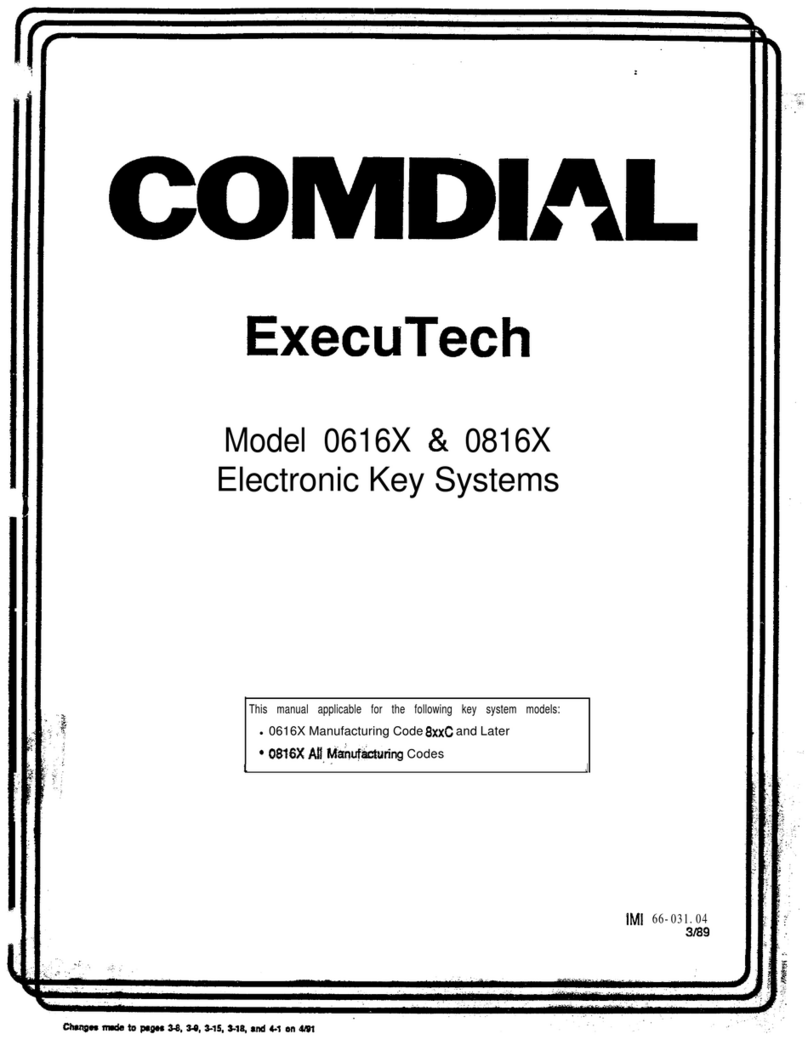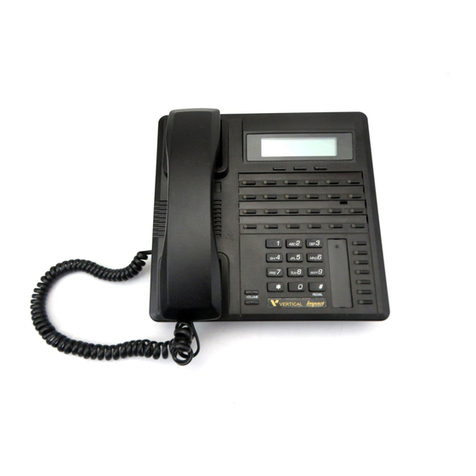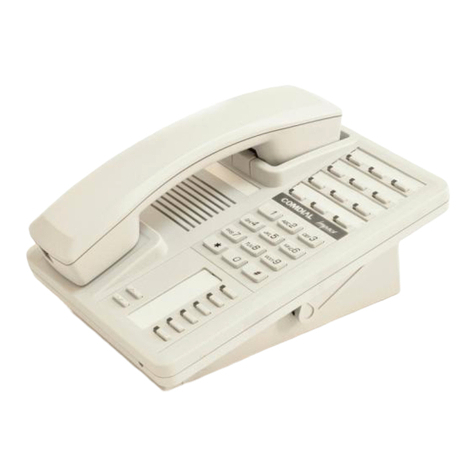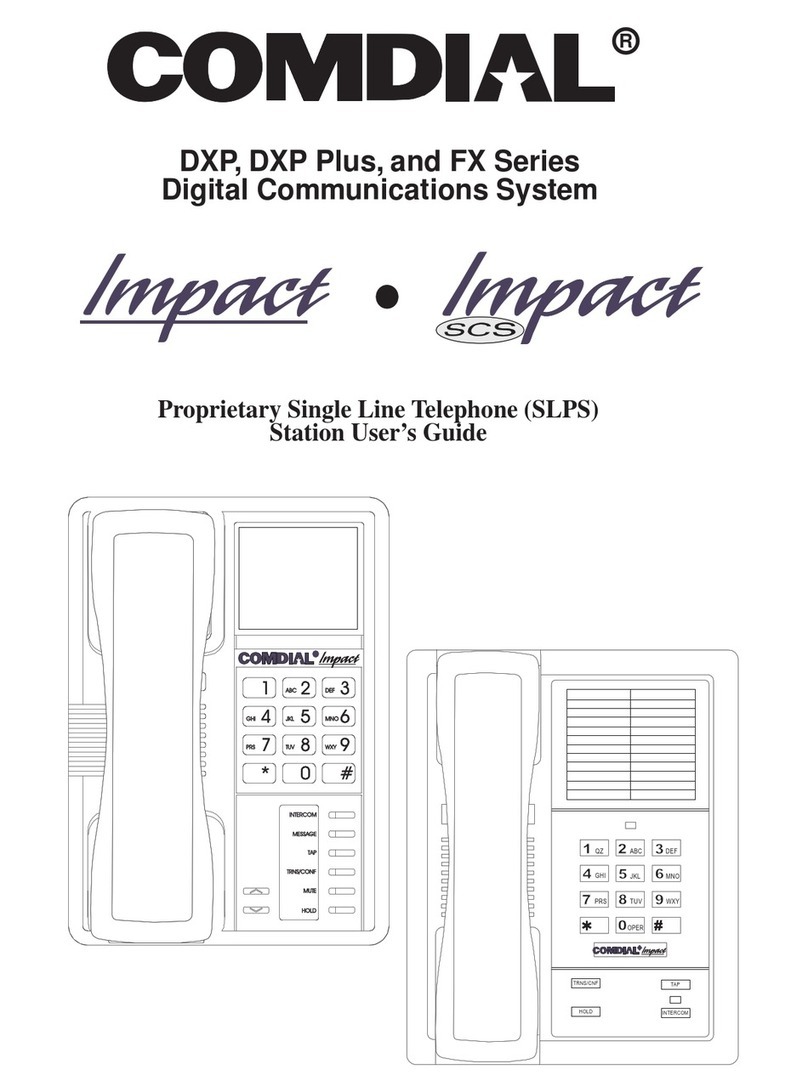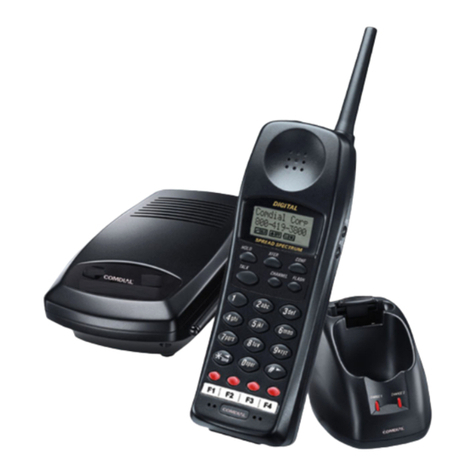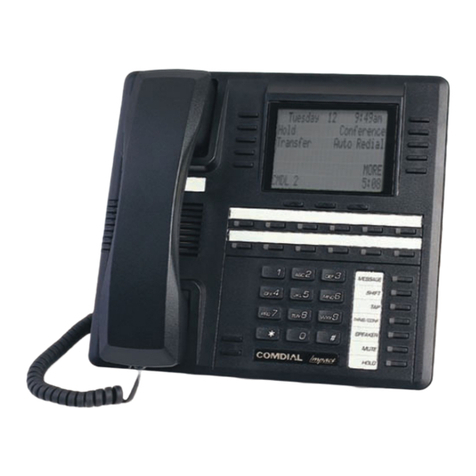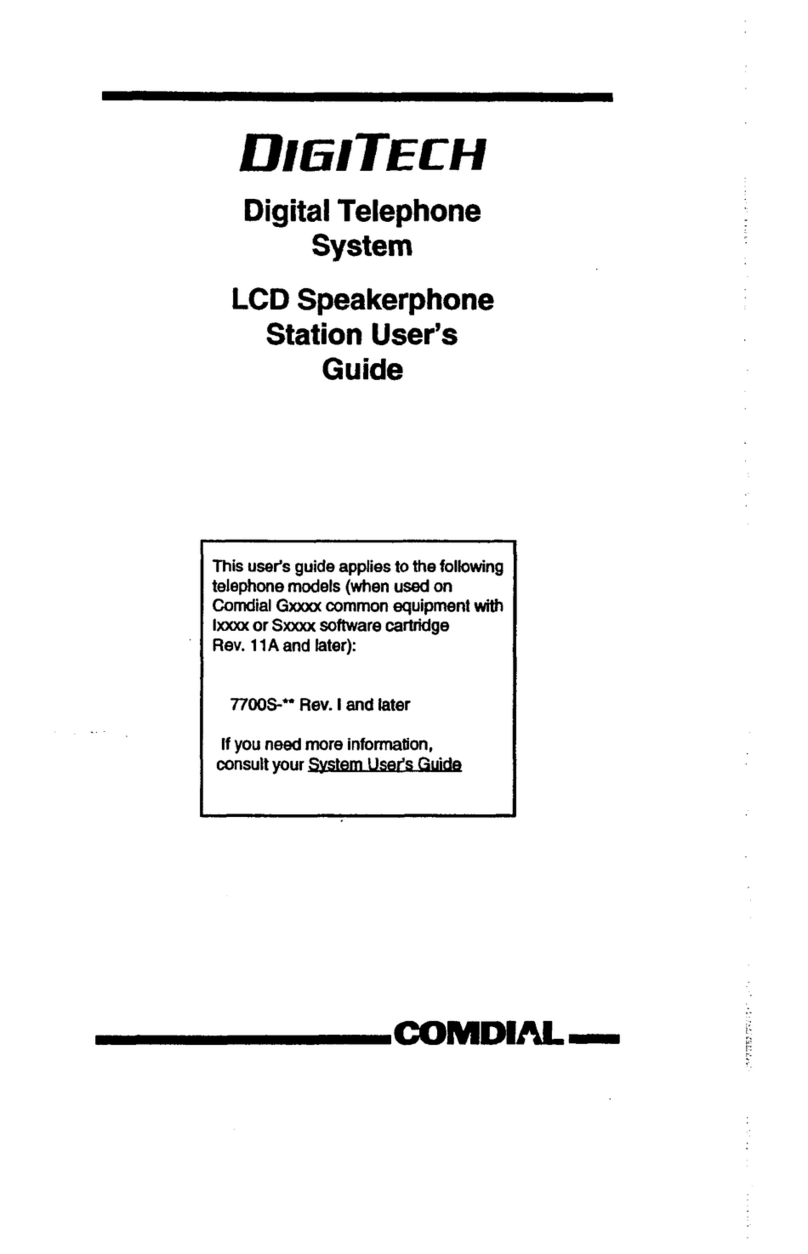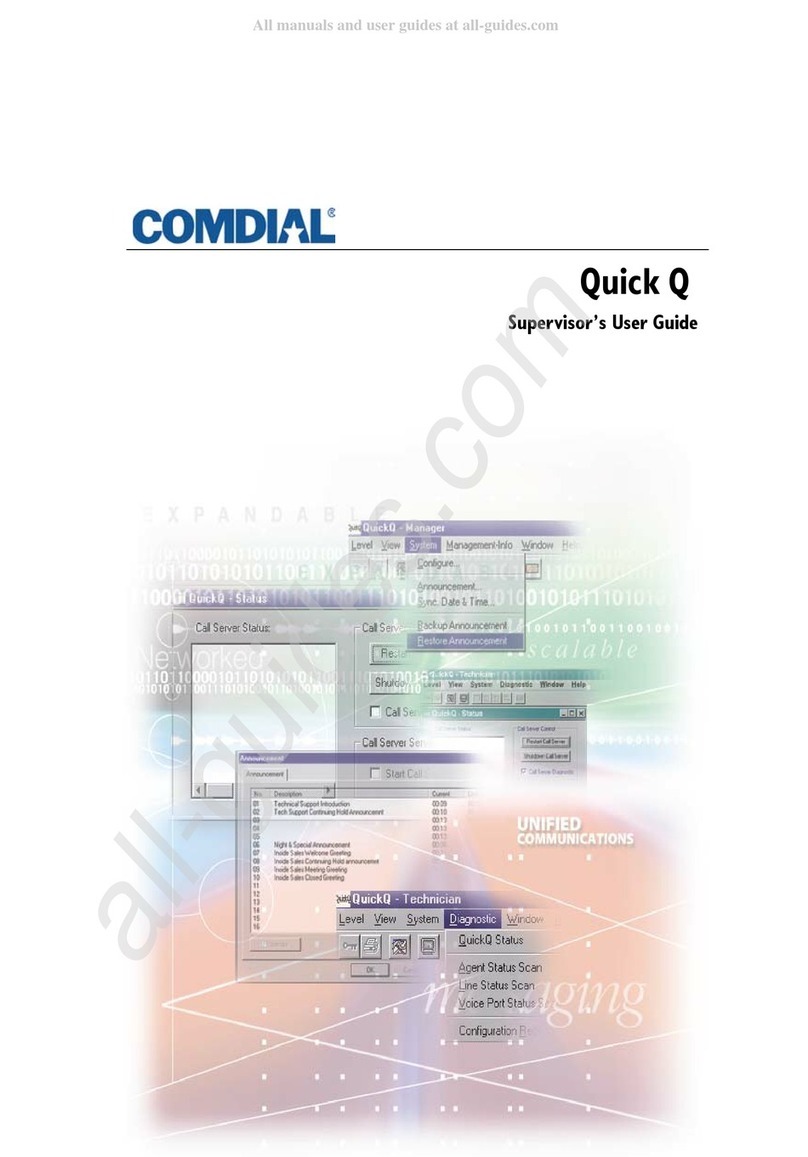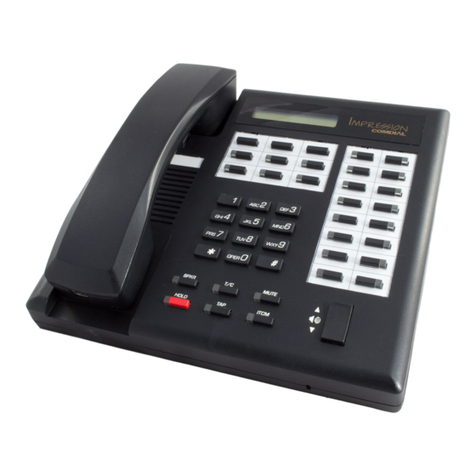
D
IMI
66-047 Introduction
COMPATIBILITY
WI'I'H
TELEPHONE
NETWORK
________ ---_ ---- ----.-
__._
_.__-
When necessary, the telephone operating company provides information
on the maximum number of telephones or ringers that can be connected
to one line, as well as any other applicable technical informaticn.
The telephone operating company can temporarily discontinue service
and
make
changes which could effect the operation of this equipment.
They must, however, provide adequate notice, in writing, of any future
equipment changes that would make the system incompatible.
INSTALLATION REQUIREMENTS
Connection of the electronic
key
system to the telephone lines must be
through a universal service order code (USOC) outlet jack supplied by
the telephone operating company. If the installation site
does
not
have the proper outlet, ask the telephone company business office
to
install one.
The correct outlet jack for this system is a type
RJ%lX.
PARTY LINES AND COIN LINES
____ ___-- ---
-.--
_-
--
Local telephone company regulations may not permit connections to
party lines and coin lines by anyone except the telephone operating
company.
TROUBLESHOOTING
-_---------.-
If a service problem occurs, first try to determine if the trouble is
in the on-site system or in the telephone company equipment.
Disconnect all equipment not owned by the telephone company. If this
corrects the problem, the faulty equipment
must
not be reconnected to
the telephone line until the problem has been corrected. Any trouble
that causes improper operation of the telephone network may require
the telephone company to discontinue service to the trouble site after
they notify the user of the reason.
REPAIR AUTHORIZATION
---
----.--.----
-
FCC regulations do not permit repair of customer owned equipment
by
anyone except the manufacturer, their authorized agent, or others who
might be autnorized by the FCC.
However, routine repairs can be made
according to the maintenance instructions in this publication,
provided that all FCC restrictions are
obeyed.
RADIO FREQUENCY INTERFERENCE
----- --.-.---- --- ------
The
electronic key system contains incidental radio frequency
generating circuitry and, if not installed and used properly, may
cause interference to radio and television reception. This equipment
has been tested and found to comply with the limits for a Class A
coimputing
device pursuant to Subpart J of Part 15 of FCC Rules. These
limits are designed to provide reasonable protection against such
interference when operated in a commercial environment.
l-3
